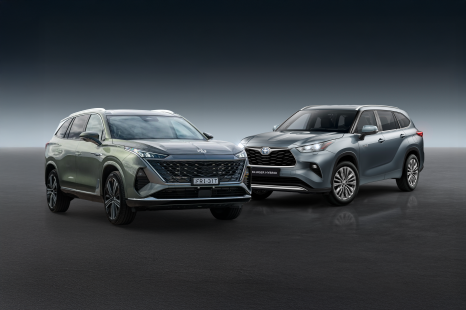

Andrew Maclean
MG QS Essence vs Toyota Kluger GX: Spec battle
1 Month Ago
The next-generation Toyota RAV4 will arrive in Australia early next year, but the current model still has plenty to offer.
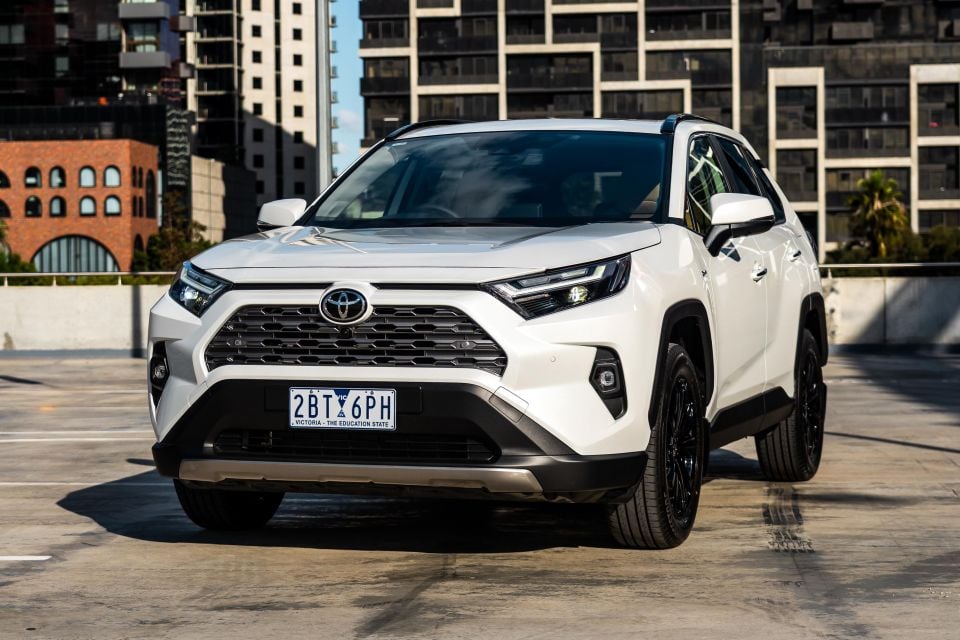
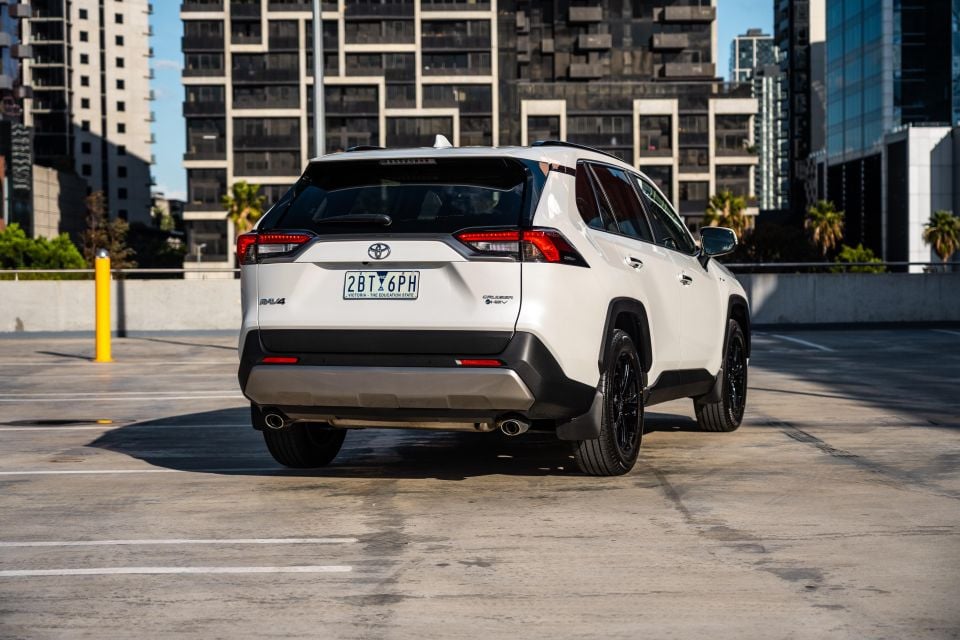

Where expert car reviews meet expert car buying – CarExpert gives you trusted advice, personalised service and real savings on your next new car.
Australia has fallen in love with mid-size SUVs, and this is the model that arguably started it all.

Launched back in 1994, the original Toyota RAV4 transformed the automotive landscape by blurring the lines between city car and SUV. It was big enough for a family, compact enough for the urban grind, and tough enough to venture off-road – a true all-rounder.
And didn’t the world love it. Over 31 years and five generations, the RAV4 has gone on to become one of the best-selling SUVs of all time. Toyota’s Jack of all trades has also driven the rise of the ‘crossover SUV’, Australia’s most popular vehicle sub-genre.
The RAV4 has little left to prove, but is that enough for it to deserve ongoing endorsement?
After all, Toyota Australia has confirmed the sixth-generation RAV4 will arrive in the first half of 2026, bringing a fresh look, new powertrains, and technology upgrades.
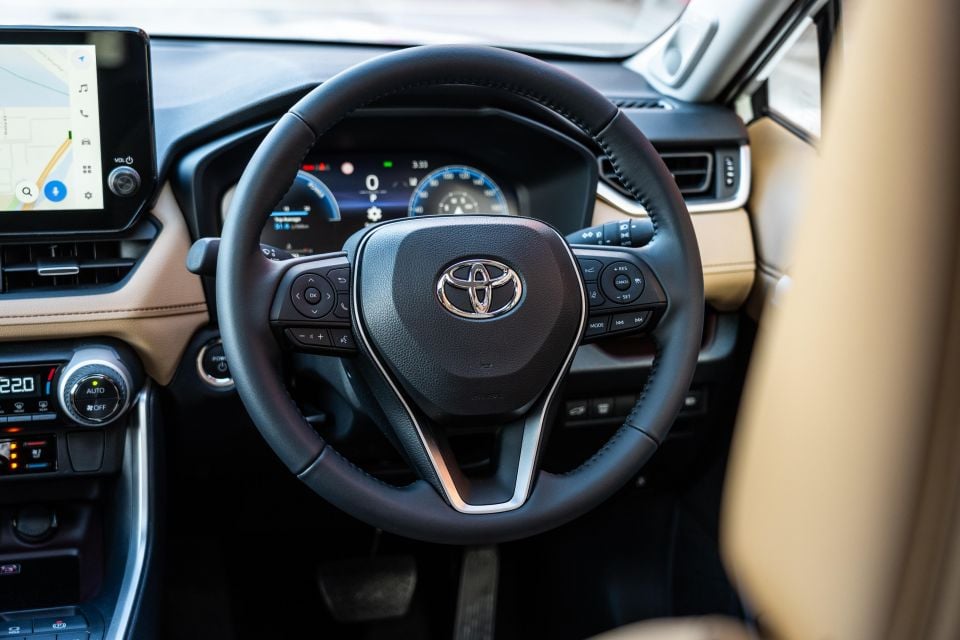
What’s more, the competition is hotter than ever. RAV4 rivals include, but are not limited to, the Hyundai Tucson, Kia Sportage, Mazda CX-5, BYD Sealion 6, Honda CR-V, Subaru Forester, Mitsubishi Outlander, Volkswagen Tiguan, and Nissan X-Trail. In other words, it’s a good time to shop around.
So, with a replacement on the horizon and adversaries nipping at its heels, we spent a week behind the wheel of a well-appointed RAV4 Cruiser FWD to see if it’s worth buying in 2025.
RAV4 prices haven’t changed for two years, and one can only expect that they will hold firm until the new model arrives early next year.
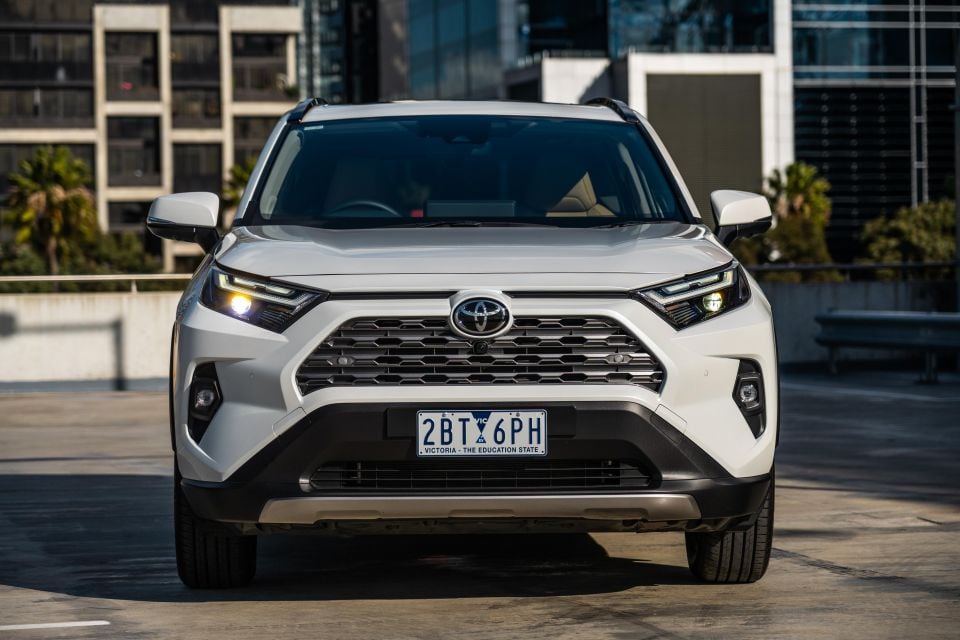
| Model | Price before on-road costs |
|---|---|
| 2024 Toyota RAV4 Hybrid GX FWD | $42,260 |
| 2024 Toyota RAV4 Hybrid GX AWD | $45,260 |
| 2024 Toyota RAV4 Hybrid GXL FWD | $45,810 |
| 2024 Toyota RAV4 Hybrid GXL AWD | $48,810 |
| 2024 Toyota RAV4 Hybrid XSE FWD | $48,910 |
| 2024 Toyota RAV4 Hybrid Cruiser FWD | $51,410 |
| 2024 Toyota RAV4 Hybrid XSE AWD | $51,910 |
| 2024 Toyota RAV4 Hybrid Cruiser AWD | $54,410 |
| 2024 Toyota RAV4 Hybrid Edge AWD | $58,360 |
To see how the Toyota RAV4 lines up against the competition, check out our comparison tool
Buy your new car without the stress. It's fast, simple and completely free.

Great service from Travis and team, second time I have used this business would not hesitate to recommend them to anyone
Craig C.
Purchased a Ford Ranger in Sunshine Coast, QLD
CarExpert helped Craig save thousands on his Ford Ranger, now let us save you on your next new car.
Find a dealThere’s not much “surprise and delight” about the inside of a RAV4, but the interior remains a functional space that caters to just about all needs.
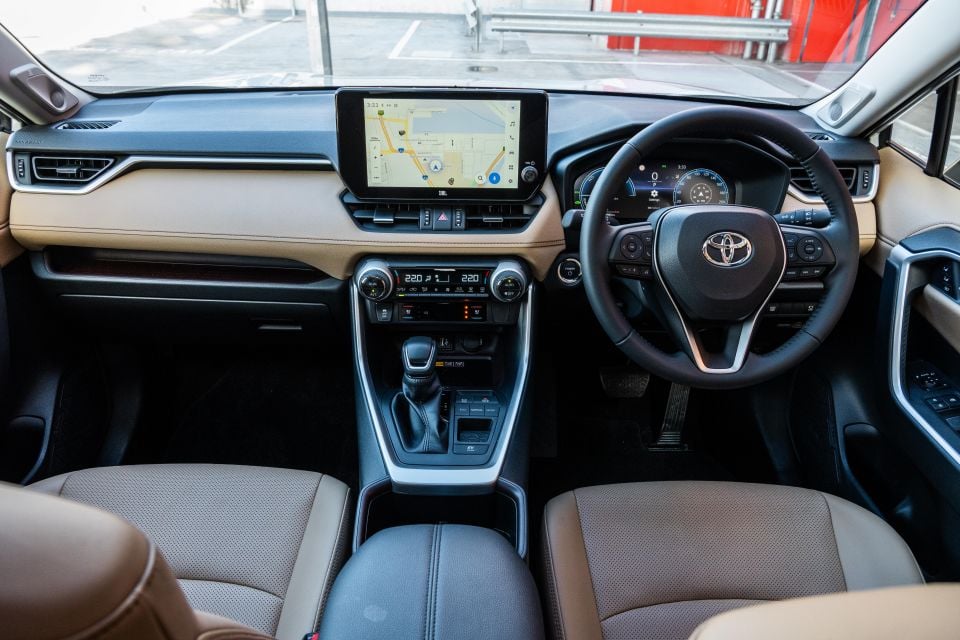
While physical buttons are going out of fashion, you don’t have to be an iPad kid to make adjustments in the RAV4.
Below the infotainment screen sits a traditional climate control panel with temperature dials, and the old-fashioned gear lever is impossible to miss. It’s likewise easy to switch between drive modes using a rotary selector located by the driver’s left knee.
The tech is all very straightforward, too. Higher trim levels of the RAV4 like this Cruiser get a 10.5-inch infotainment touchscreen and 12.3-inch digital instrument cluster, both of which modernise the cabin without introducing unnecessary complexity.
Considering how most people actually use their cars on a daily basis, Toyota hasn’t bothered to spice up the infotainment system with a ‘Disco Mode’ or selfie camera. Rather, it’s a simple unit that prioritises popular functions such as smartphone mirroring, navigation, and digital radio. All can be accessed through shortcut icons pinned to the right side of the screen.
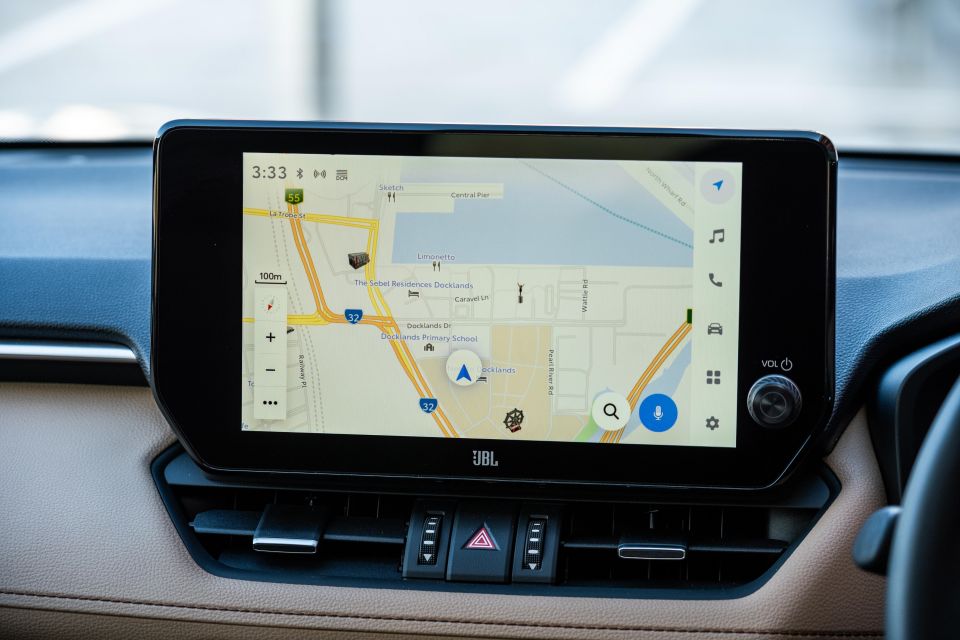
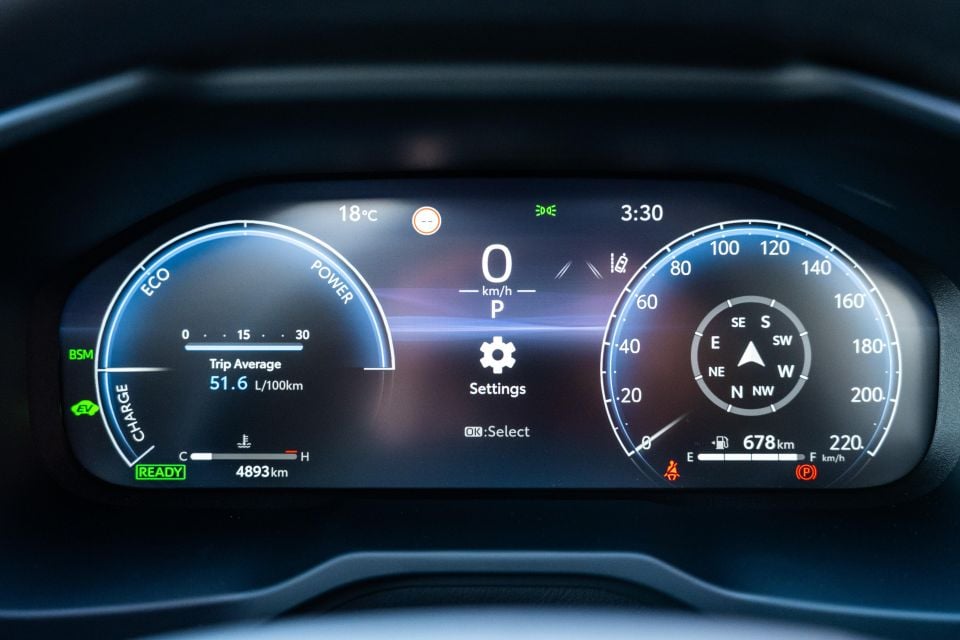
Aside from the choice to keep or ditch the shortcuts, the system doesn’t afford much configurability, not that I ever desired it.
Tech-heads may bemoan the uninspiring graphics and sometimes sluggish loading speeds, but we never experienced any wireless CarPlay dropouts or related reliability issues. If you desperately need a stable connection, there’s always the option to pair your phone using the USB-A outlet under the centre stack. A pair of USB-C charging outlets can also be found in the centre console.
The digital instrument cluster includes large gauges with customisable data readouts in each, so you can keep an eye on things like fuel economy and tyre pressures. The display has a sharper appearance than the infotainment screen, and it’s a significant upgrade over the 7.0-inch version found in lesser RAV4s.
Likewise, the upgraded nine-speaker JBL sound system has enough oomph to set it apart from the base six-speaker setup. It’s enhancements like this that encourage buyers to spend up at the dealership.
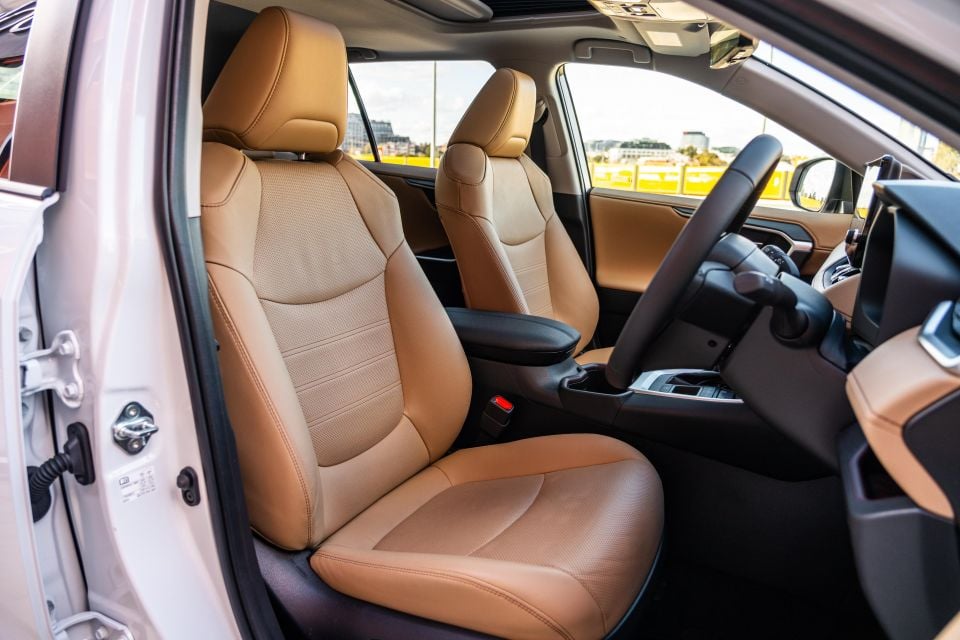
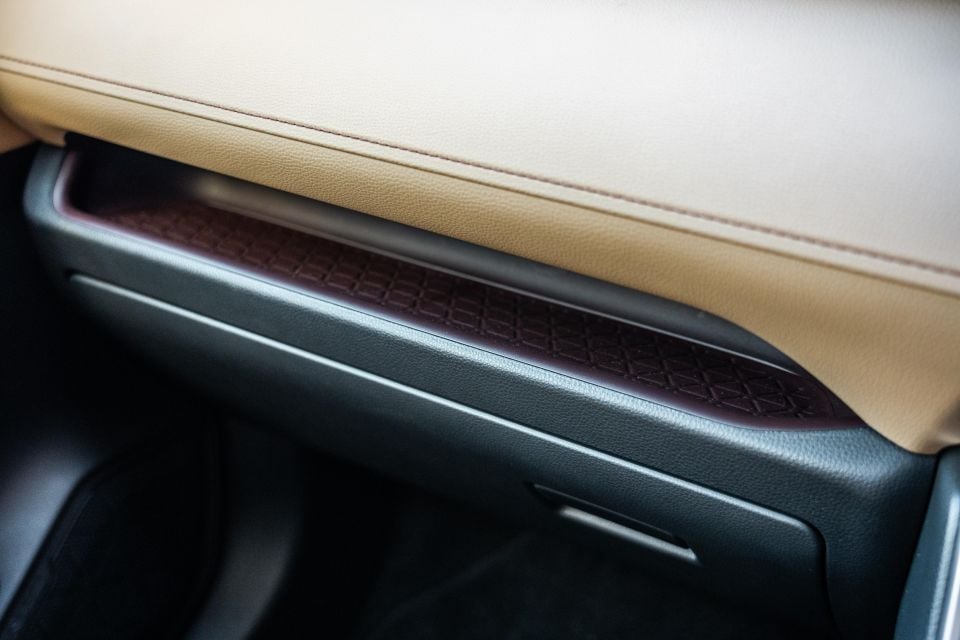
Regardless of trim level, the RAV4 does without a head-up display, which sets it back compared to modern rivals.
But in Cruiser trim, the RAV4 is still more than competitive in terms of materials and build quality. Tan leather (yes, the real stuff) coats the seats and steering wheel, as well as sections of the dash and door cards, adding a premium feel to this mainstream SUV.
The Cruiser also brings heated and ventilated front seats with full electric adjustment, lumbar, and extended thigh support. All the aforementioned features make the RAV4 a comfortable road trip companion.
Other high traffic areas are finished in soft-touch plastics, except for the sides of the centre tunnel which aren’t all that comfortable to rest your knee against.
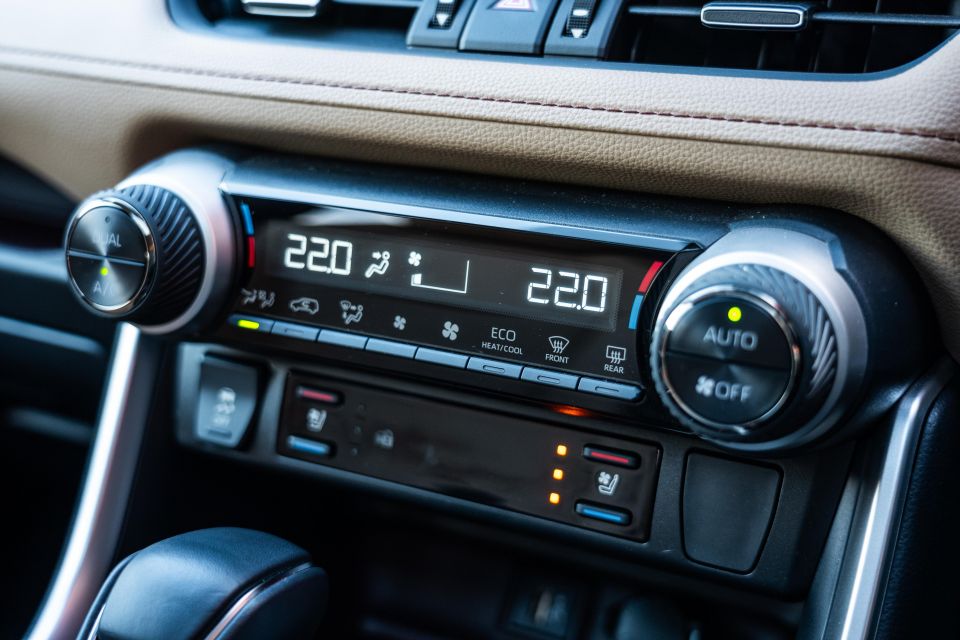
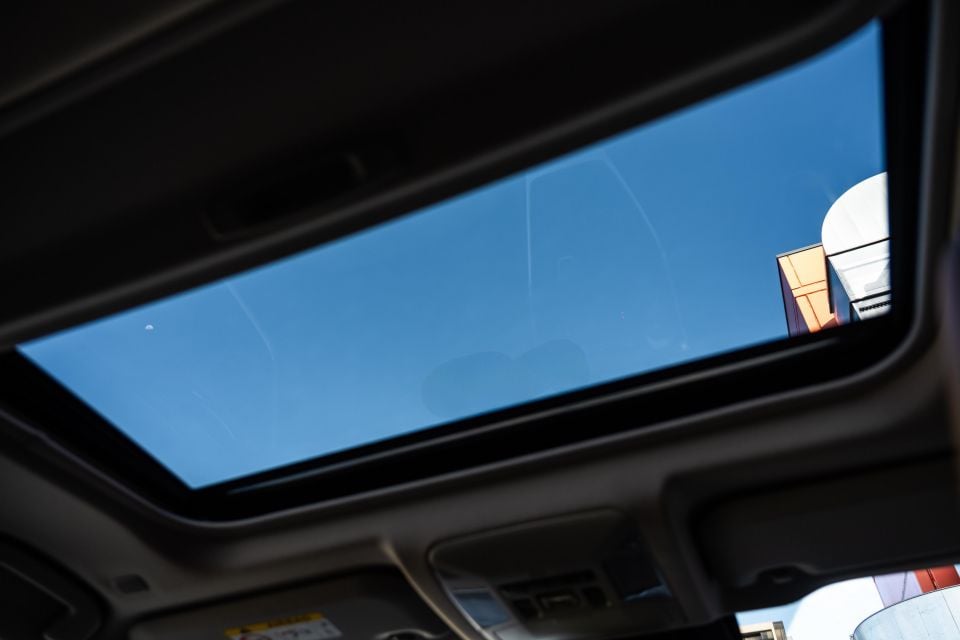
The buttons are all click-y and well-weighted, while the door handles and climate control dials are wrapped in a durable rubber coating.
Such hardwearing touches are a nod to Toyota’s preference towards function over form, and that philosophy is reflected in the practicality of the cabin.
On top of all the standard storage solutions, the RAV4 houses an additional tray above the glovebox, a wireless charging pad under the centre stack, and a sunglasses holder overhead. There’s truly a spot for all your bits and bobs up front, which declutters the interior to no end.
The second row is equally practical, with enough space for children and adults alike to travel in comfort. At 6’1″, I was pleasantly surprised to find a full inch of space between my knees and the driver’s seat, while headroom is even less of an issue.
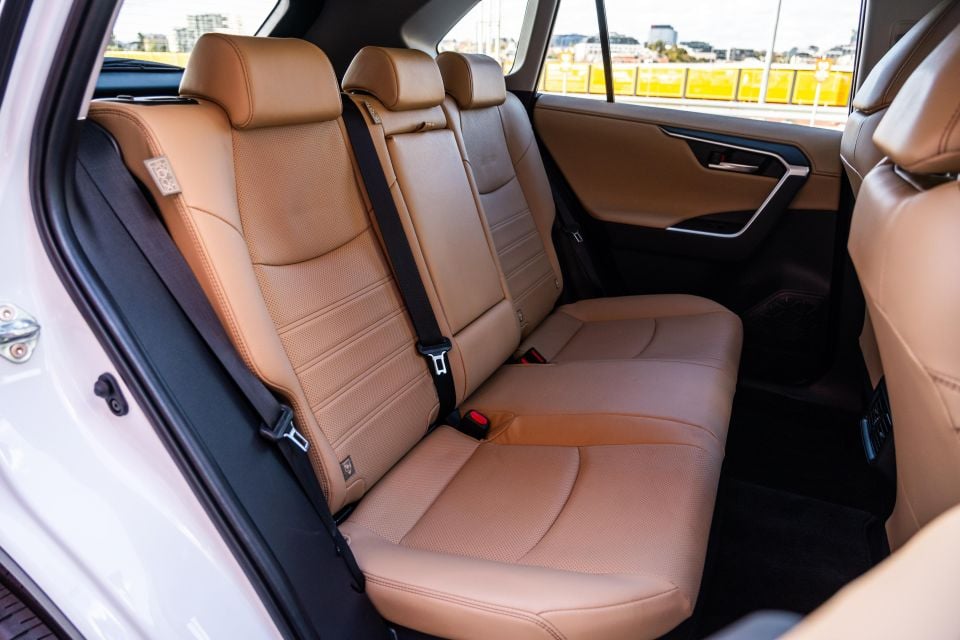
The rear bench reclines to allow for a more relaxed seating position over longer journeys, and massive windows stave off any whiff of claustrophobia.
Further, there’s only a slight driveline hump running through the middle of the floor, so the middle seat is perfectly usable.
Rear amenities include dual USB-C outlets, air vents, a central armrest and bright overhead lighting, while drinks can be stored in the doors or dedicated cupholders in the armrest.
Toyota quotes 542 litres of boot space for this particular RAV4 variant, which is about par for the segment. However, numbers don’t tell the whole story.
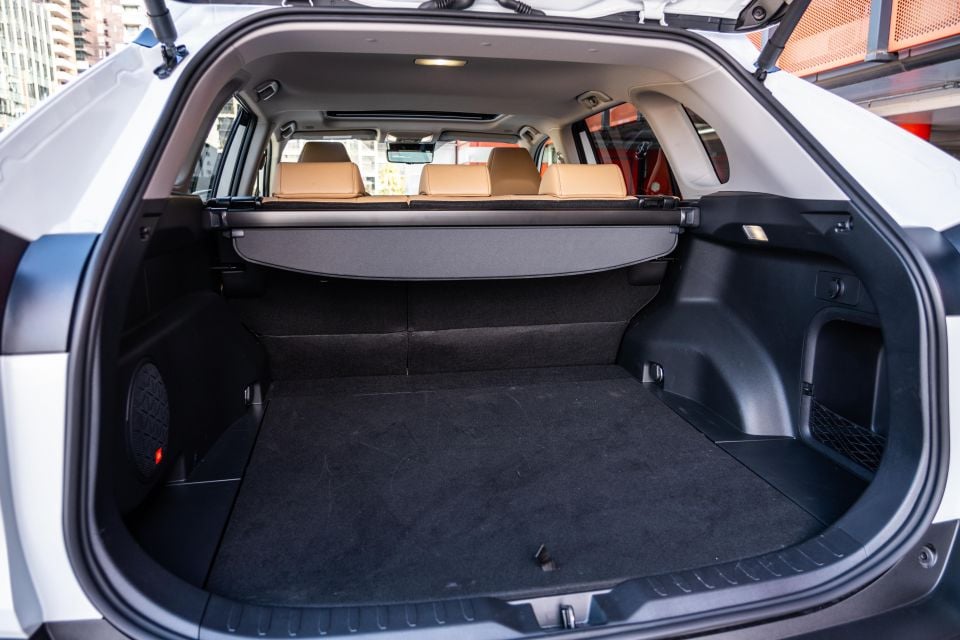
That’s because the cargo area has been designed with practicality front of mind.
For example, the powered tailgate lifts to reveal a huge aperture and flat loading bay, both of which help when you’re dealing with bulky items like furniture or appliances.
The boot also contains useful extras like a 12V power source, retractable cargo blind, and tie down points on the floor.
Should extra space be required, the rear bench folds flat to expand the storage area. Under the boot floor you’ll find a space saver spare tyre.
| Dimensions | Toyota RAV4 Cruiser FWD |
|---|---|
| Length | 4600mm |
| Width | 1855mm |
| Height | 1685mm |
| Wheelbase | 2690mm |
| Cargo capacity | 542L |
To see how the Toyota RAV4 lines up against the competition, check out our comparison tool
Hybrid power is now standard right across the RAV4 range, leaving buyers with the choice of front- or all-wheel drive.
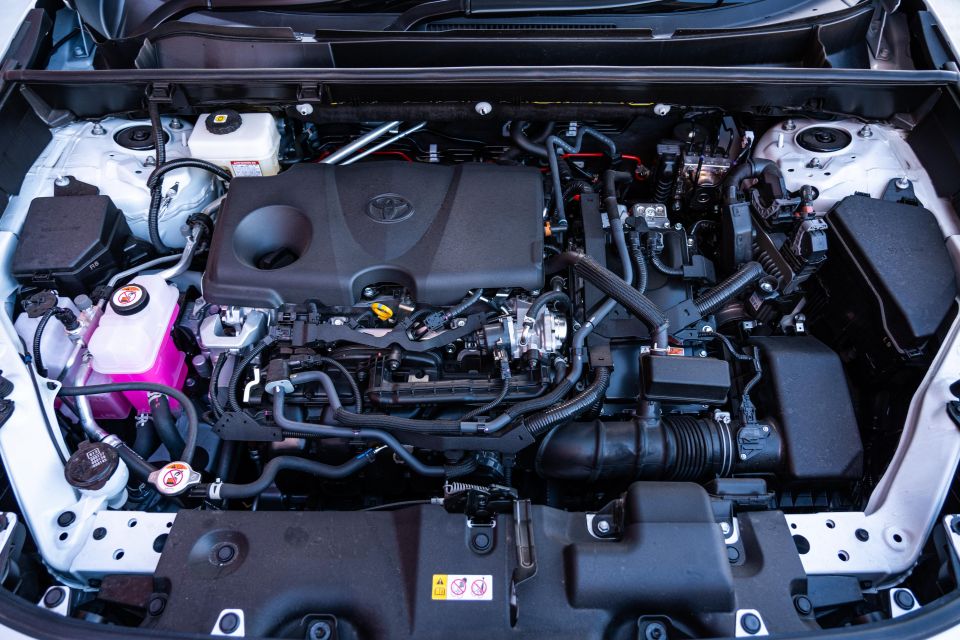
| Specifications | Toyota RAV4 Cruiser FWD |
|---|---|
| Engine | 2.5L 4cyl hybrid |
| Engine outputs | 131kW / 221Nm |
| Electric motor outputs | 88kW / 202Nm |
| System outputs | 160kW |
| Battery | 6.5Ah nickel-metal hydride |
| Transmission | e-CVT |
| Driven wheels | FWD |
| Weight | 1755kg |
| Fuel economy (claimed) | 4.7L/100km |
| Fuel economy (as tested) | 6.1L/100km |
| Fuel tank capacity | 55 litres |
| Fuel requirement | 91-octane regular unleaded |
| CO2 emissions | 107g/km |
| Emissions standard | Euro 5 |
| Braked towing capacity | 480kg |
The next-generation RAV4 will be offered here with hybrid and, for the first time, plug-in hybrid power, as well as front- or all-wheel drive. Regardless of drive type, all new RAV4 Hybrid vehicles will produce 143kW of power – down 17kW on the current model.
However, the PHEV brings a 22.7kWh lithium-ion battery, upping maximum system output to 227kW. That makes the PHEV the most powerful RAV4 to date – even more powerful than the 3.5-litre V6 version of the third-generation RAV4 that produced 201kW of power.
To see how the Toyota RAV4 lines up against the competition, check out our comparison tool
The Cruiser may sit toward the pointy end of the RAV4 range, but it’s no different from the base GX in a mechanical sense.
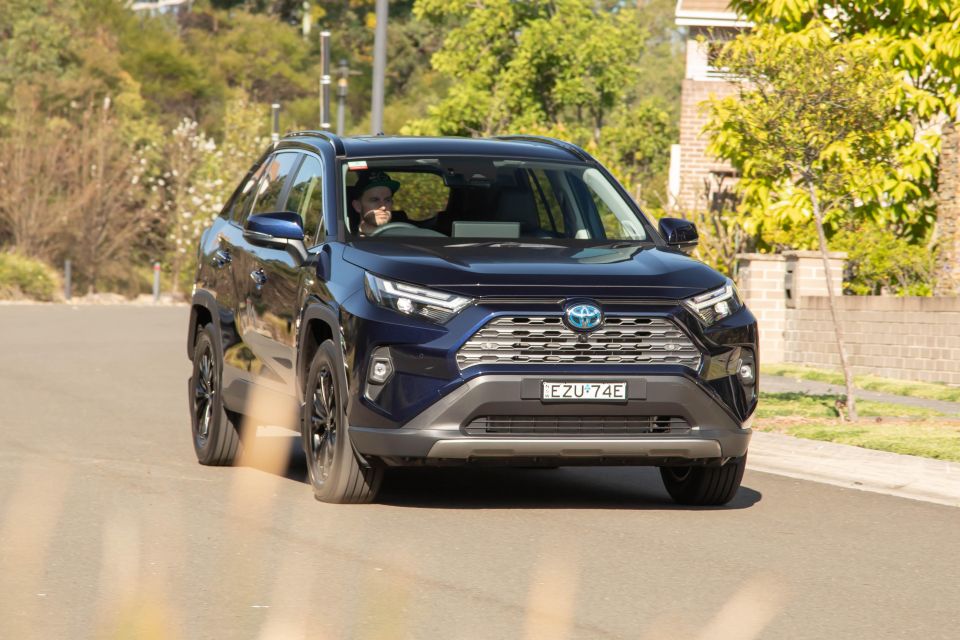
Toyota axed petrol versions of its Corolla, Corolla Cross, Camry, RAV4 and Kluger in June last year, committing to hybrid power as a means of decarbonising the lineup. As such, RAV4 buyers are left with one simple choice – front- or all-wheel drive.
If your lifestyle involves dirt roads or campgrounds, spending up for all-wheel drive is a no-brainer. After all, peace of mind is worth at least a few grand.
But for city-slickers, there’s a lot to be said for FWD versions of the RAV4, even those that aren’t fully loaded like our Cruiser tester. Because regardless of how power is distributed, the RAV4 is an SUV that boasts an array of universally sought after attributes.
For starters, it’s quiet and effortlessly efficient. This is apparent from the moment you hit the start button, as the hybrid RAV4 awakens in silence. And shifting into drive doesn’t disturb that peace, as the RAV4 operates like an EV in low-stress situations. It’s only once you lean on the throttle or crank the A/C that the petrol engine makes its presence known.
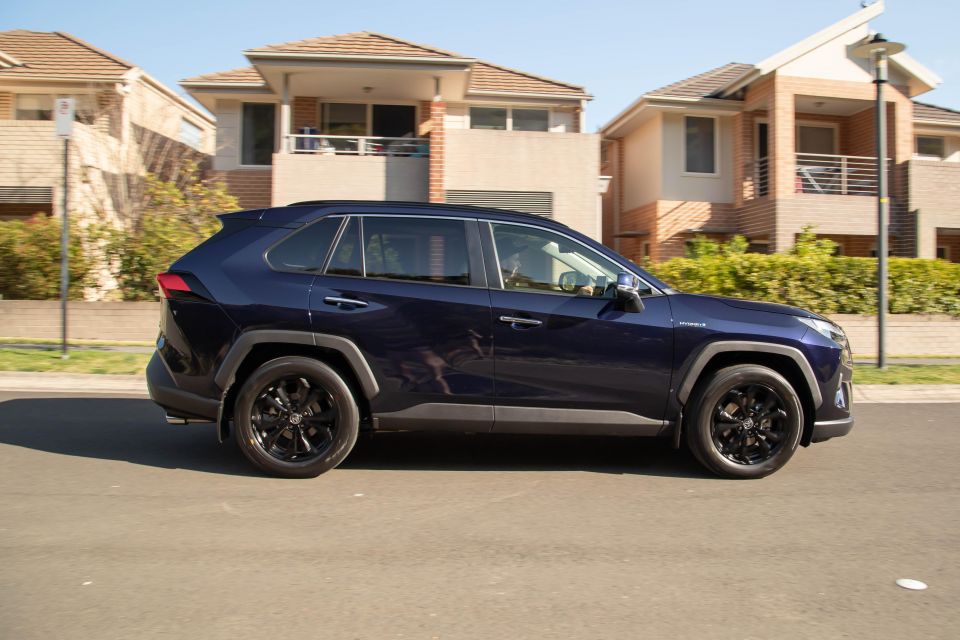
Even then, the powertrain is pleasantly muted – it’s quiet under acceleration and the e-CVT transmission doesn’t drone as others do.
And of course, the eagerness of the RAV4 to lean on electric power translates to impressive fuel consumption, or lack thereof. Our test car sipped an average of 6.1L/100km over the course of a week spent in heavy city traffic, but Toyota claims a combined 4.7L/100km – a figure that’s only bettered by plug-in hybrid (PHEV) and EV alternatives.
In addition to unrivalled efficiency, Toyota’s hybrid system offers ample performance in urban driving. While no featherweight, the RAV4 feels zippy around town, with enough electric torque to quickly set off from a standstill. It’ll sprint from 0-100km/h in roughly eight seconds too, which makes it quicker than most mainstream SUVs.
There are three drive modes – Eco, Normal, and Sport – with EV mode available for short stints, though the battery isn’t large enough to provide meaningful electric range. Of the available modes, Eco best complements the personality of the RAV4.
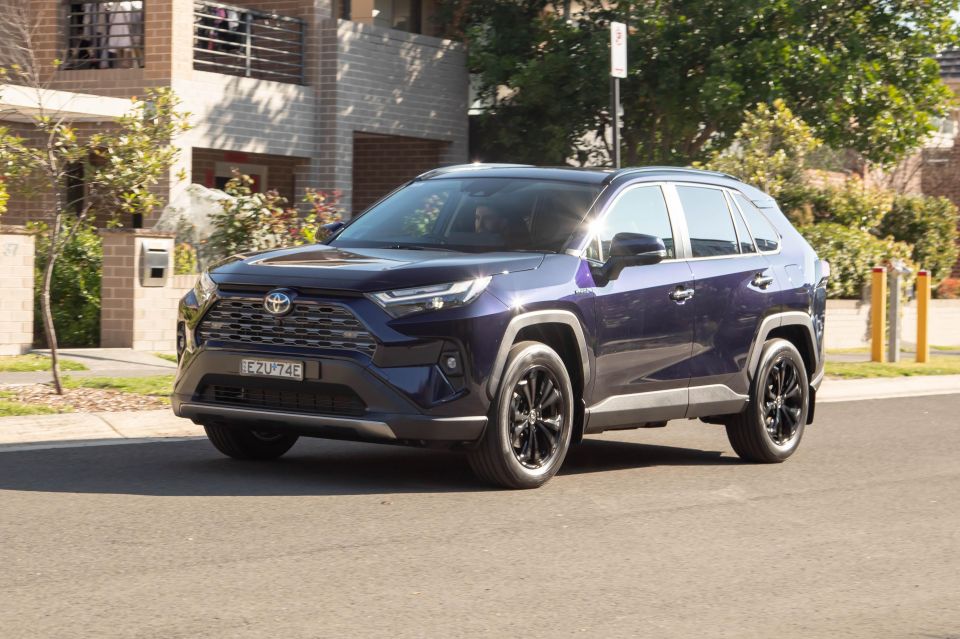
Where expert car reviews meet expert car buying – CarExpert gives you trusted advice, personalised service and real savings on your next new car.
However, that’s not to say the RAV4 is completely devoid of dynamic appeal. It feels smaller and more nimble than its size suggests, encouraging the driver to scythe through the suburbs with confidence.
And while the ride is on the firmer side, the suspension soaks up bumps without transmitting harshness and vibrations into the cabin. The RAV4 is also quick to regain stability after longer undulations.
Both the steering wheel and throttle pedal are user-friendly in their weight and feedback, although the brake pedal is overly sensitive, sometimes delivering more stopping power than intended with only a light touch. This is particularly frustrating in stop-start traffic, and drew complaints from passengers who rarely criticise my driving.
It’s easier to make smooth progress on the highway, although high-speed driving highlights previously unnoticed flaws in the RAV4.
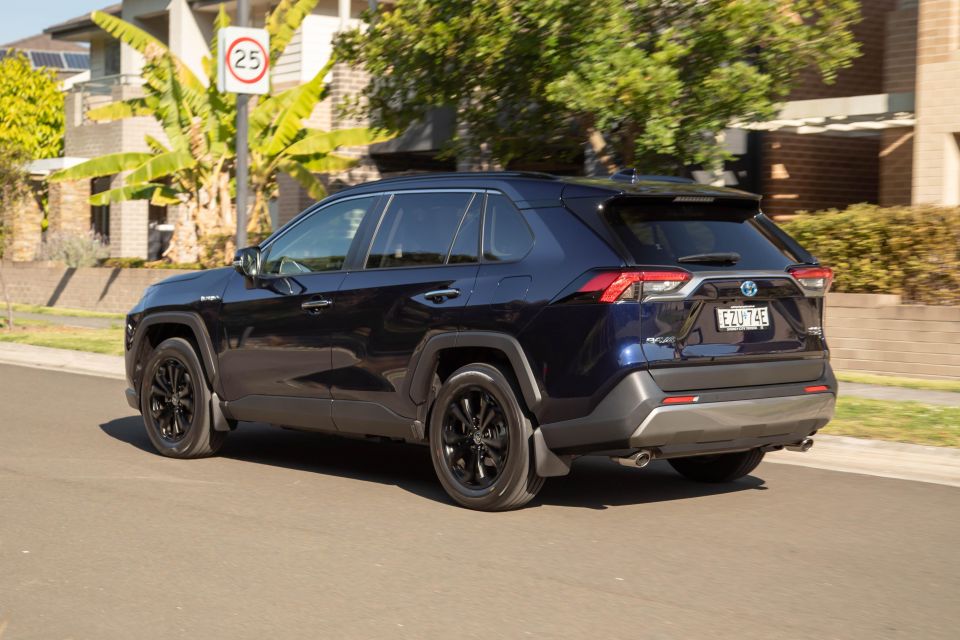
One of those is tyre roar, which is accentuated by the quietness of the powertrain. Other noises of the outside world are also too easily heard from inside the RAV4, a criticism that suggests Toyota should add a bit more sound deadening to its best-selling SUV.
There’s still a lot to like though. The RAV4 cruises happily at 100km/h and isn’t short on overtaking power. Further, Toyota’s advanced adaptive cruise control system helps to reduce the driving load during longer journeys.
At the same time, a steering-based driver monitoring system will sound a warning if it senses distraction or fatigue, but it’s more forgiving than the camera-based systems found in rivals. That’s also true of other safety technologies found in the RAV4, including proximity sensors and the lane-keep assist feature.
Frontal visibility is excellent, as you’d expect from a tall SUV, although the rear window could be bigger. You won’t have any issues parking though, as the Cruiser is equipped with front and rear sensors, as well as a surround-view camera with multiple views which is rather helpful in tight shopping centre carparks.
To see how the Toyota RAV4 lines up against the competition, check out our comparison tool
The RAV4 is offered in five different trim levels – on test here is the Cruiser variant.
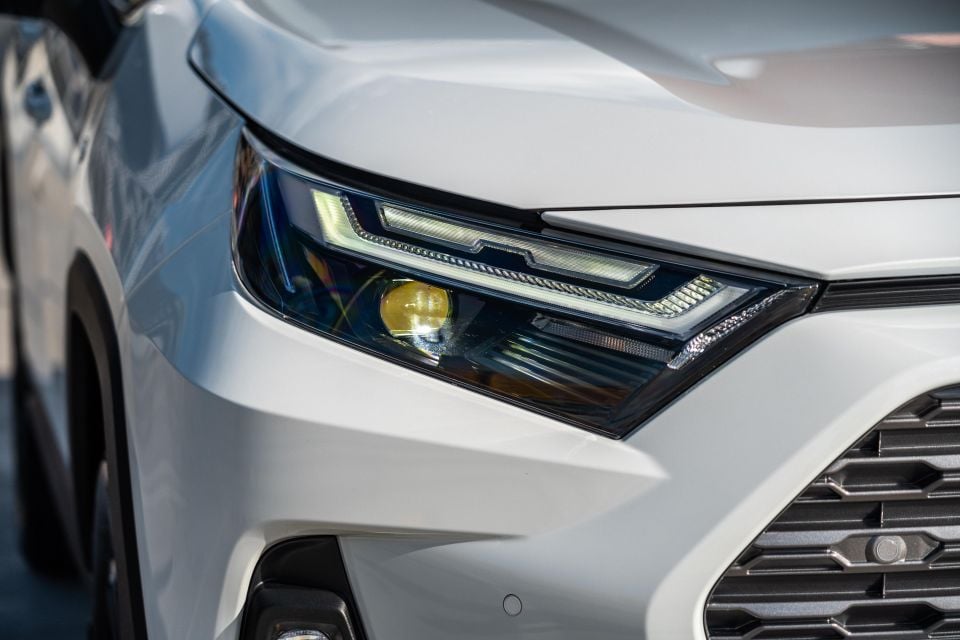

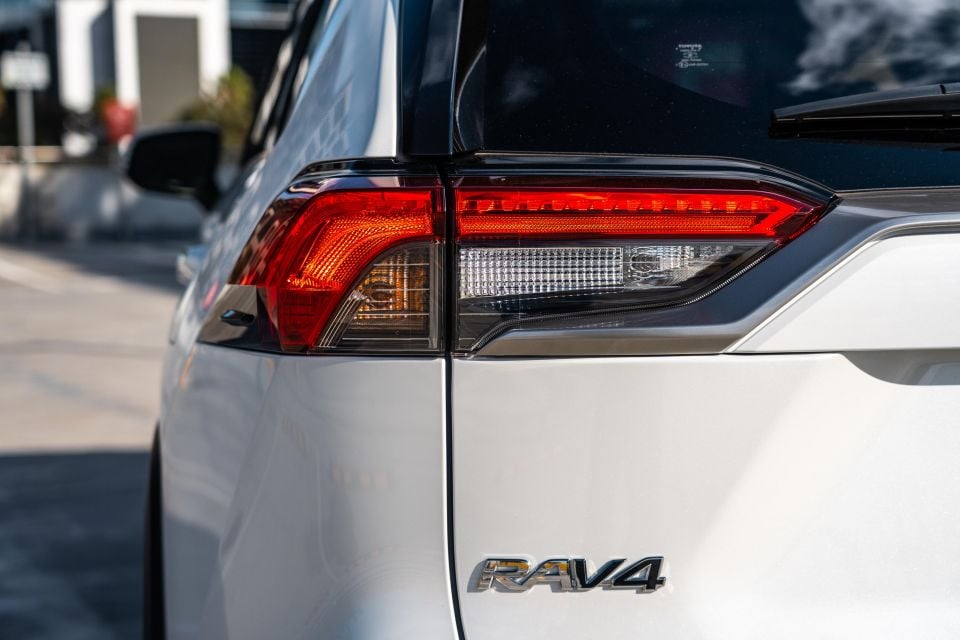

2026 Toyota RAV4 GX equipment highlights:
The GXL adds:
The XSE adds:
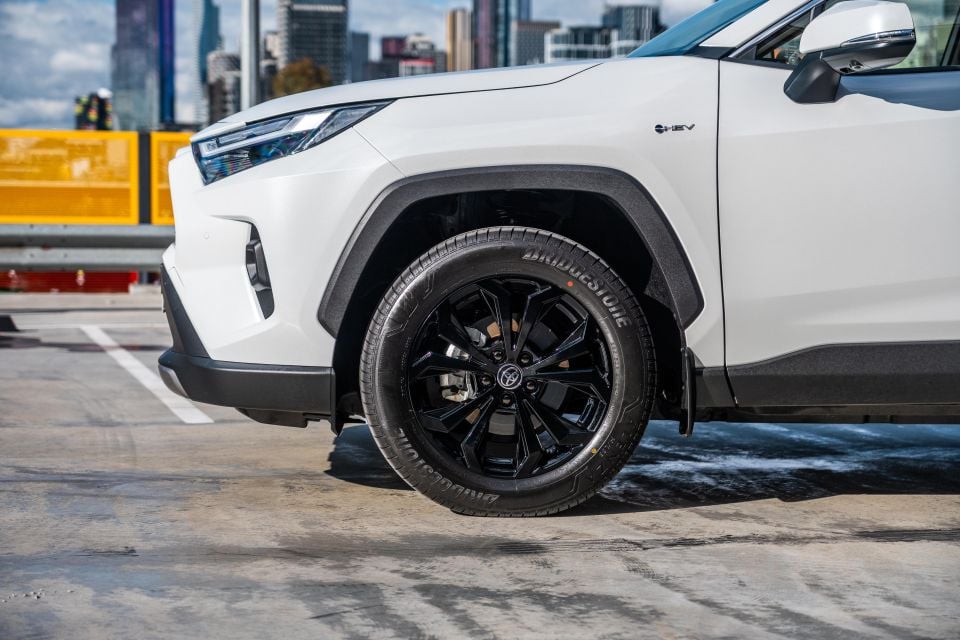
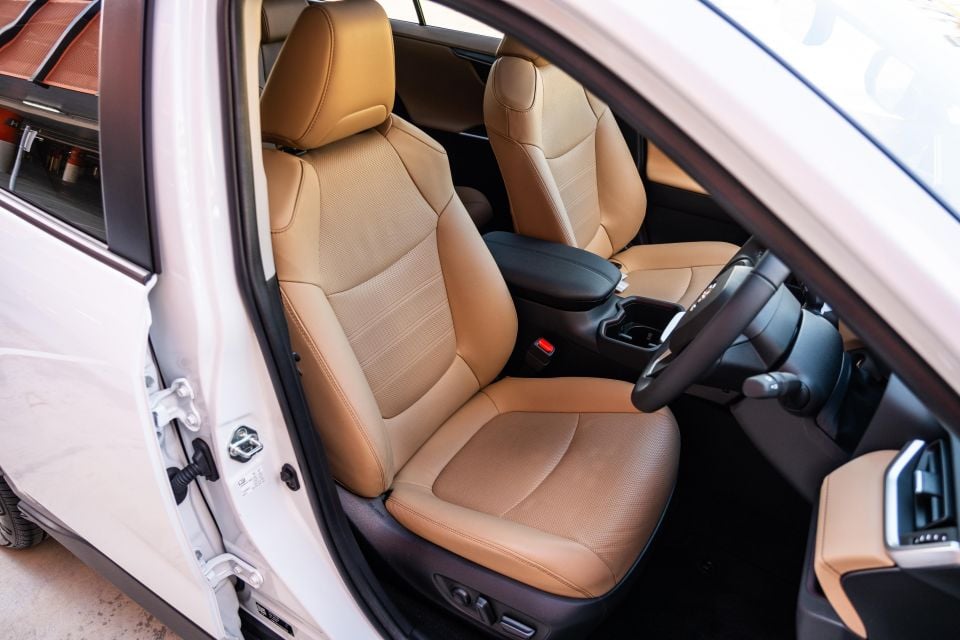
The Cruiser adds:
The Edge adds:
To see how the Toyota RAV4 lines up against the competition, check out our comparison tool
The RAV4 has a five-star safety rating from ANCAP, based on tests conducted by Euro NCAP in 2019.
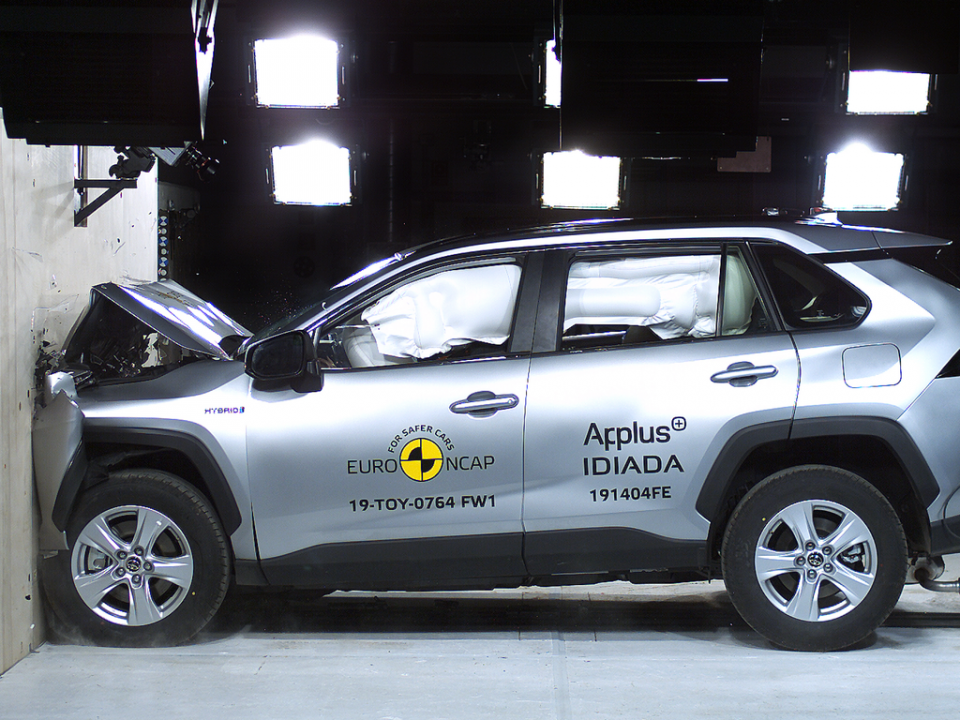
| Category | Toyota RAV4 |
|---|---|
| Adult occupant protection | 93 per cent |
| Child occupant protection | 89 per cent |
| Vulnerable road user protection | 85 per cent |
| Safety assist | 83 per cent |
Standard safety equipment includes:
Cruiser and above receive a surround-view camera.
To see how the Toyota RAV4 lines up against the competition, check out our comparison tool
The RAV4 is backed by a five-year, unlimited-kilometre warranty. Toyota doesn’t offer complementary roadside assistance like many other brands do.
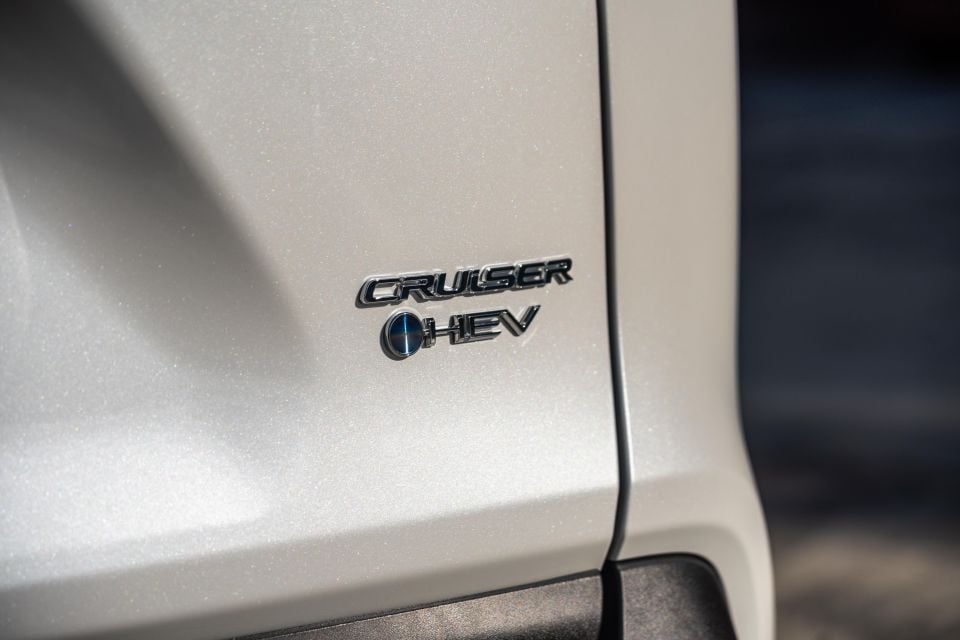
| Servicing and warranty | Toyota RAV4 |
|---|---|
| Warranty | 5 years, unlimited kilometres 7 years, unlimited kilometres (extended drivetrain) |
| Roadside assistance | $99 per year |
| Service intervals | 12 months or 15,000km |
| Capped-price servicing | 5 years or 75,000km |
| Average annual service cost | $270 |
| Total capped-price service cost | $1350 |
While roadside assistance will cost you a few extra bucks, the RAV4 is still cheaper to service than most rivals.
The popularity of this model also translates to strong resale values on the used market, although the arrival of the 2026 RAV4 may shake things up as current owners look to upgrade.
To see how the Toyota RAV4 lines up against the competition, check out our comparison tool
The RAV4 is Australia’s favourite SUV (and best-selling Toyota) for good reason – it’s a practical and efficient package with runs on the board.

And that package is arguably best experienced in Cruiser trim, as tested here. The extra outlay nets a whole heap of premium equipment including an upgraded stereo, sunroof, heated and ventilated front seats, leather trim, and a digital rear-view mirror, without pushing the asking price to ridiculous heights.
With all the add-ons, it feels like a very complete mid-sizer with few vices, apart from a gratingly grabby brake pedal. To some extent, that lack of flaws contributes to the RAV4’s lack of character, but that hasn’t dampened its appeal for many.
The bottom line is, this is still one of the most well-rounded vehicles in its segment. Sure, there’s an all-new RAV4 arriving in early 2026, but that may be too long a wait for some. It also remains to be seen whether the next-generation RAV4 remains an affordable option for Australian families, and indeed whether it’s any better than the model it replaces – which it will need to be given the significant price hikes expected.
As such, the current model is still well worth shortlisting if you’re after a fuss-free mid-size SUV.
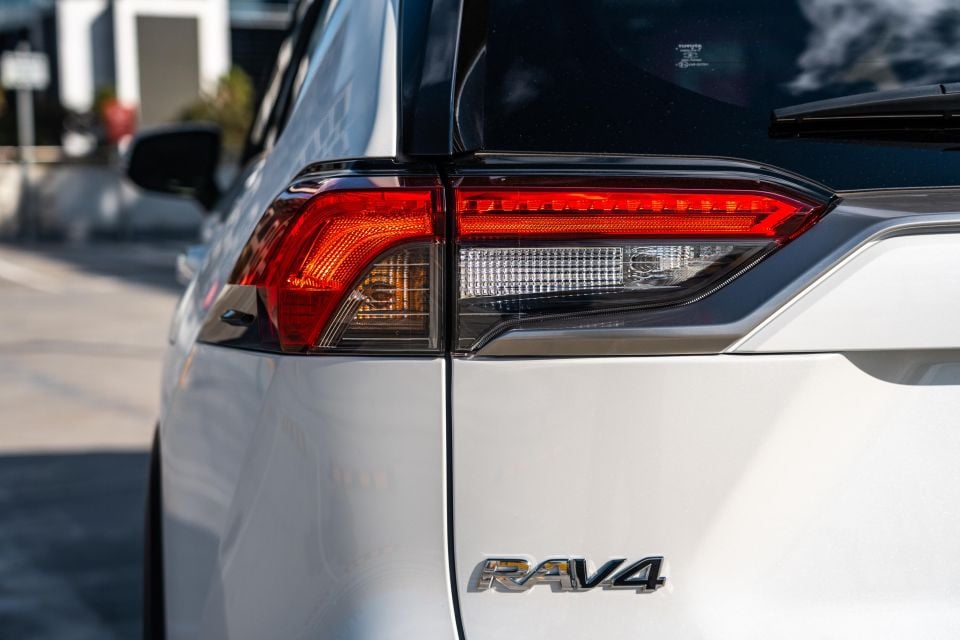
CarExpert can save you thousands on a new Toyota RAV4. Click here to get a great deal
Click the images for the full gallery
Where expert car reviews meet expert car buying – CarExpert gives you trusted advice, personalised service and real savings on your next new car.
Josh Nevett is an automotive journalist covering news and reviews, with a background in motorsport journalism.


Andrew Maclean
1 Month Ago
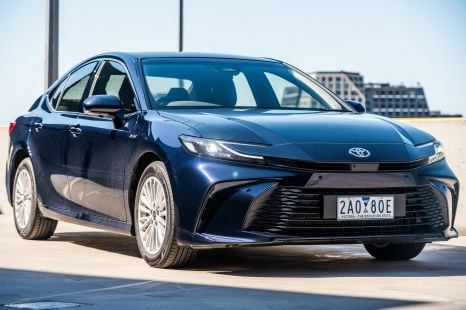

Josh Nevett
30 Days Ago
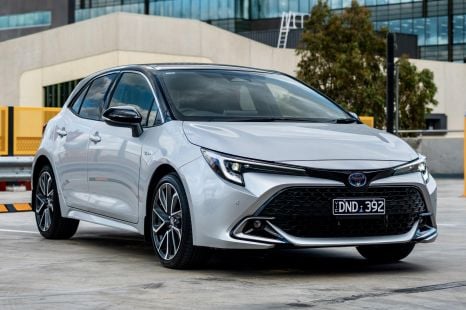

Max Davies
21 Days Ago
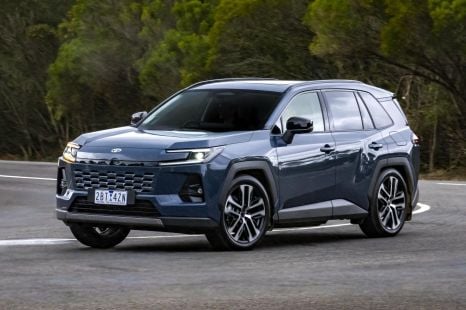

Paul Maric
18 Days Ago
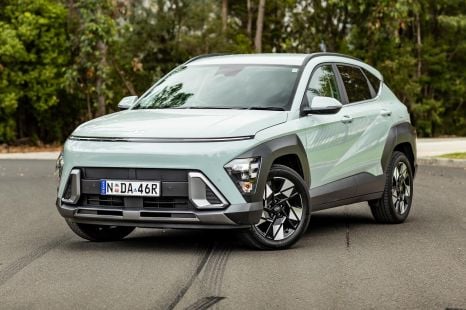

Matt Campbell
7 Days Ago
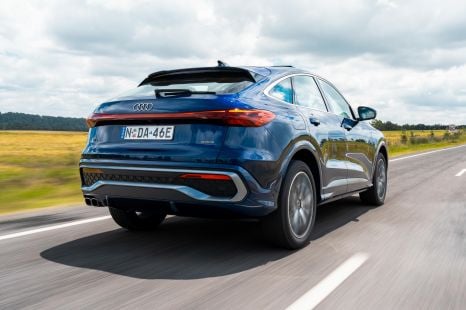

James Wong
4 Days Ago